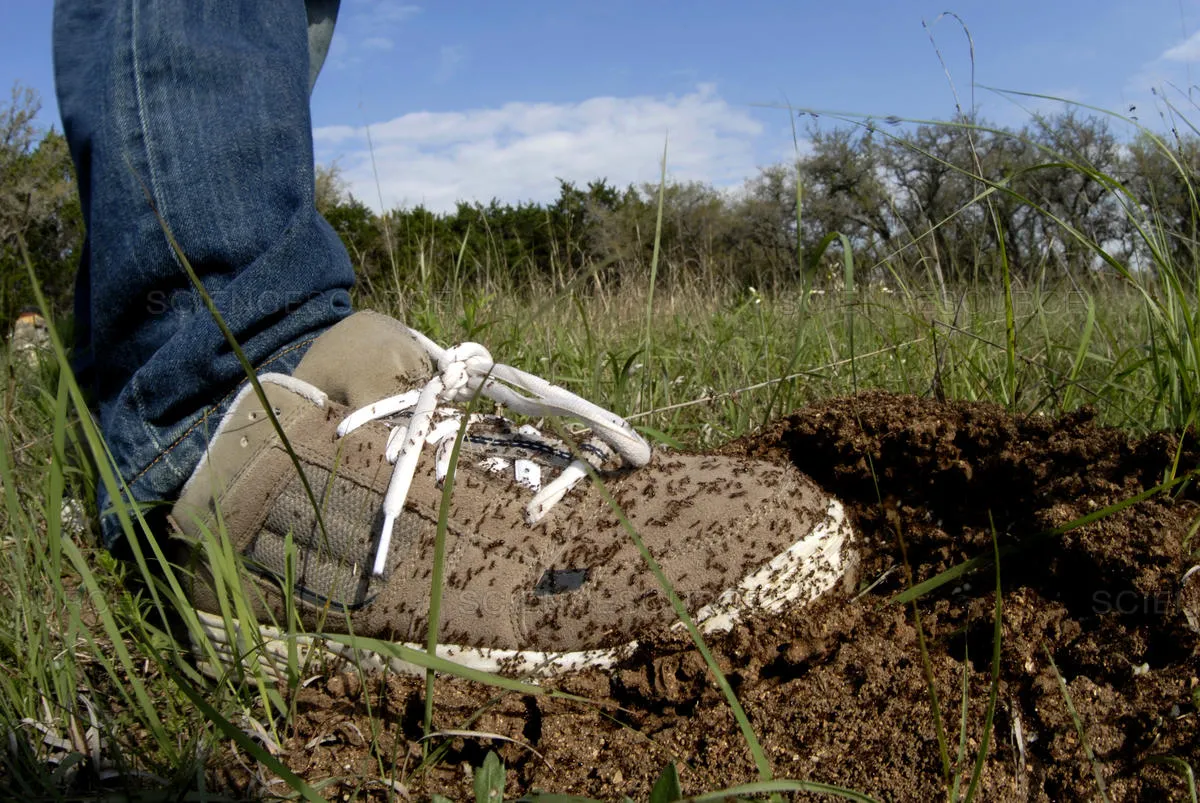Fire ants are the true definition of a Gainesville lawn pest, and there are roughly 5 million Americans stung by fire ants each year. Tragically, about a dozen of these individuals die from severe allergic reactions. Even small animals, including pets, are at risk from their stings.
Here are some interesting fire ant facts...
Fire Ants were accidentally brought into this country on a cargo boat from South America. Since arriving in Alabama, fire ants have spread aggressively, though they remain primarily in the South and Southeast because northern soil temperatures make it tough to survive the winters.
Fire ants live in colonies, which can contain over 200,000 ants.
Fire ant colonies are typically comprised of female worker ants and one queen, who is responsible for laying the eggs.
Workers create underground tunnels that can extend up to 200' to 300' feet away from the mound.
Mounds are built to maintain a precise temperature for the colony. Fire ants shift their eggs up and down based on temperature and moisture. The record for the largest fire ant mound? A Mr. Garcia won that dubious record in 1997 with a mound that measured 18" tall and 40" across (Yikes!)
If stung by fire ants, it usually seems everything is normal then suddenly there are dozens or more stinging all at once. That's not an accident. Fire ants quietly swarm but don't sting until they perceive a threat - usually you swatting at them. At that point one will release a pheromone telling the rest to sting all at once.
Fire ants are suspicious. An excellent way of controlling them is with baits, but if you disturb their bed by applying food directly on their mound, they frequently become suspicious and stop foraging.
Fire ants survive flooding waters by creating a pancake that will float in the water, surviving for weeks without losing ants and posing a hazard for rescue workers. You can see one in action by clicking here (interesting but creepy factor warning!) On bare ground they will build themselves into a tower of ants that will repel rain drops.
There is no doubt that fire ants are bad business. Since lawn spraying and pest control is part of what we do at The Master's Lawn Care, we've heard of numerous ways to control fire ants over the past decade. One of my favorites came from a University study that concluded, in an amazingly understated way, that digging up the nest was ineffective because it dispersed the ants. My first thought after reading that was, 'who was the poor undergrad who got picked to dig up the fire ant mound to see if that would get rid of them?!' I certainly wouldn’t volunteer for that study.
Now that you know more about fire ants, how do you control themif they're in of your lawn or landscape?
How do you control Gainesville Fire Ants in your Lawn?
If you want to DIY it, we recommend a combination of fast-acting products such as Bifenthrin (Ortho Fire Ant Killer is a brand name) and a long-lasting bait such as Amdro. This is a one-two punch, but you will be chasing them from March through October (warmer months) to keep them out of your yard.
At The Master's, we use a product called Fipronil for our customers, which isn't available without a Florida Pest Control license. It is a great product and effective product because It creates a season-long barrier in the soil that fire ants can't survive in.
If you have a question or concerns about pests in your lawn or landscape give us call at 352-378-5296 or email our team at info@themasterslawncare.com. I love getting your questions and often turn the content into a Quick Tip to help educate all of our customers.


